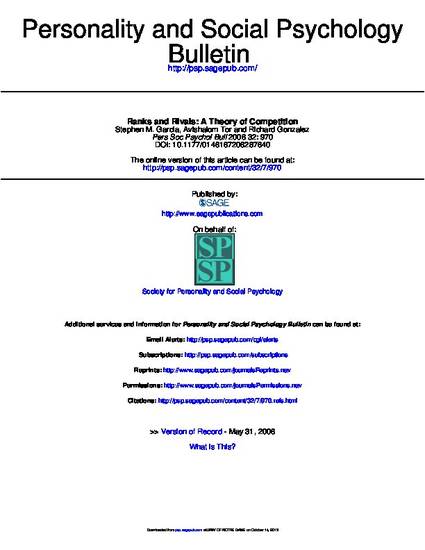
- Law and
- Law and Economics
Social comparison theories typically assume a comparable degree of competition between commensurate rivals on a mutually important dimension. In contrast, however, the following set of studies reveals that the degree of competition between such rivals depends on their proximity to a standard. Studies 1-3 test the prediction that individuals become more competitive and less willing to maximize profitable joint gains when they and their commensurate rivals are highly ranked (e.g., #2 vs. #3) than when they are not (e.g., #202 vs. #203). Studies 4-6 then generalize these findings, showing that the degree of competition increases not only for high ranks but also in the proximity of other meaningful standards, such as the bottom of a ranking scale or a qualitative threshold in the middle of a scale. Studies 7-8 further examine the psychological processes underlying the present findings and reveal that proximity to a meaningful standard exerts a direct impact on the unidirectional drive upward, beyond the established effects of commensurability and dimension relevance.
Available at: http://works.bepress.com/avishalom_tor/9/

Reprinted with permission of Personality and Social Psychology Bulletin.